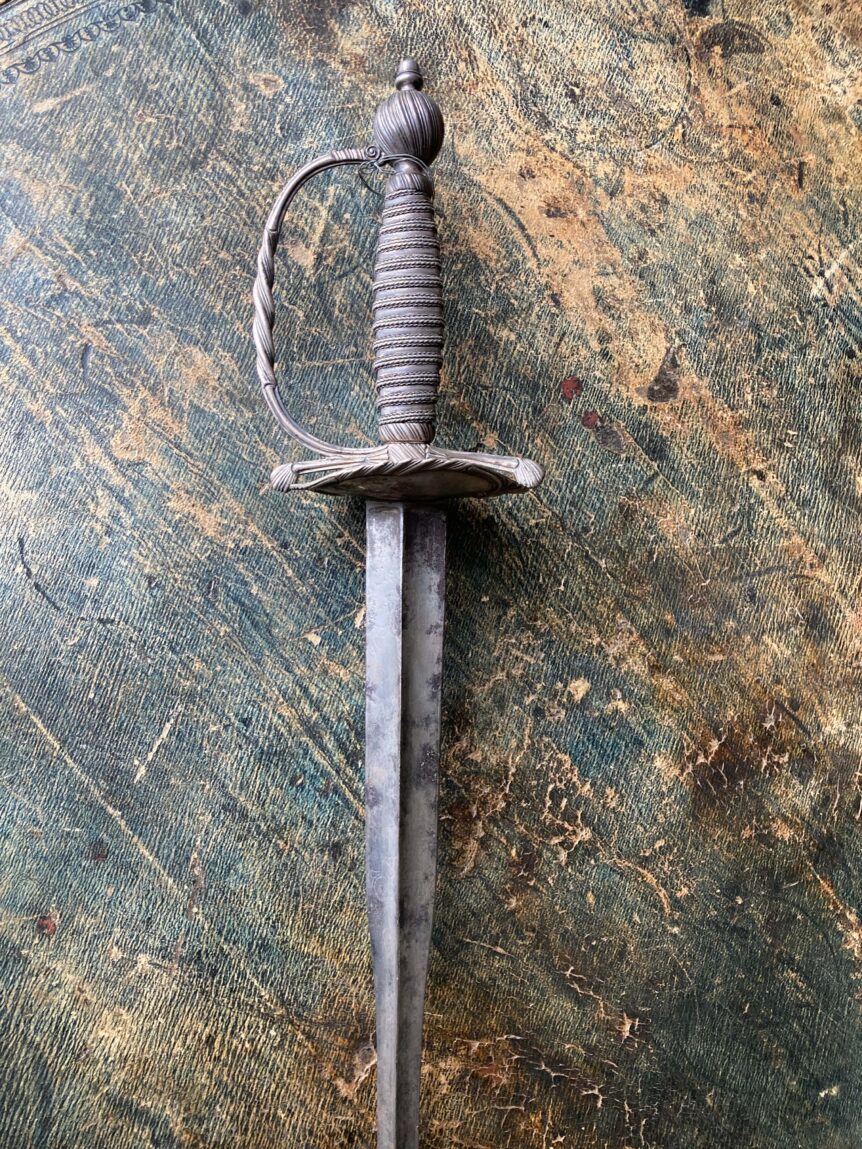Following the turmoil of the Jacobite rebellion 1745-6, the coronation of King George III in 1761 at Westminster Abbey offered an opportunity for many Scottish noble families to attend and take the oath of allegiance to a new Hanoverian monarch. The Bruce family was represented by Charles 5th Earl of Elgin & 9th Earl of Kincardine.
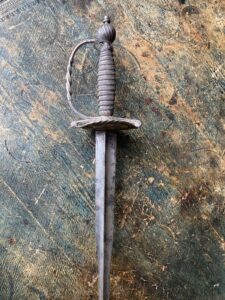
Court sword kept in the library at Broomhall House.
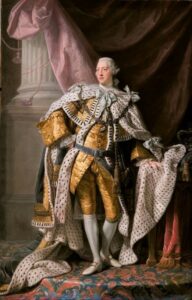
Coronation portrait of George III, painted by Alan Ramsay, 1761
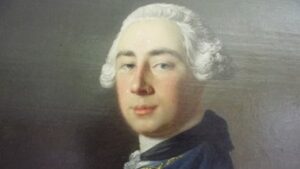
Portrait of Charles Bruce 5th Earl of Elgin and 9th Earl of Kincardine, painted by Alan Ramsay, 1759
Although the 3rd Earl of Elgin had attended the 1685 coronation of James II in a ceremonial capacity, the senior Bruce peerage had subsequently devolved to the Kincardine line, requiring the 5th Earl to travel to London and equip himself at considerable expense to attend in the appropriate style. A personal overdraft agreed with the banker Thomas Coutts gave Charles a budget of £300, sufficient to take the lease of a house for the duration of the festivities, a carriage, horses, retainers, a coronet, ceremonial robes and a court sword. The sword (above) appears to be the only item which survived the coronation. It is kept in the library at Broomhall House.
Accounts of the event indicate a chaotic experience which lasted for 10 hours including two coronation ceremonies (King George and Queen Charlotte), a service of Holy Communion, the taking of the oath of allegiance, followed by a banquet lit by 3,000 candles.
Set into the floor before the High Altar at Westminster Abbey are three porphyry (red marble) disks presented in 1869 by Victor Bruce, 9th Earl of Elgin & 13th Earl of Kincardine, to complete the restoration of the ancient Cosmati Pavement which had been damaged by the erection and dismantling of earlier altars. The shaft of a column of Egyptian porphyry from which the disks were cut is still at Broomhall House.
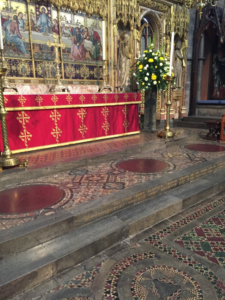
Byzantine porphyry disks set into the Cosmati Pavement before the High Altar at Westminster Abbey, gifted by Victor Bruce, 9th Earl of Elgin.
Twenty years later, in 1889, the 9th Earl gifted a single slab of Byzantine porphyry to be laid over the burial place of King Robert the Bruce behind the communion table of the Abbey Church of Dunfermline, once the Royal necropolis of Scotland, a distinction uniquely shared with Westminster Abbey (read more about King Robert the Bruce at Dunfermline Abbey here).
In 1937 and 1953 the Bruce family was represented at the coronation services of King George VI and Queen Elizabeth II by Edward Bruce, 10th Earl of Elgin & 14th Earl of Kincardine. Asked afterwards how he had enjoyed the spectacle of attending two coronations in his lifetime, he explained that he had seen very little of either ceremony as he sat behind the same column on both occasions. Evidently the peers were seated alphabetically.
Attending Westminster Abbey with her husband, Lady Elgin (Hon. Kitty Cochrane) admired the embroidered heraldic hangings which were specially designed as a dramatic backdrop for the coronation service. Two sections which she acquired after the service still hang as curtains in the front hall at Broomhall House, and keep the winter chill at bay.
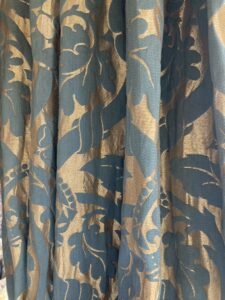
Length of brocatelle fabric in blue silk and gold brocade repurposed as curtains to hang at Broomhall House, commissioned by The Ministry of Works for the coronation of George VI at Westminster Abbey, 12th May 1937. Designed by Herbert Woodman. Woven by Warner & Sons.
Read ‘The Bruce Family and coronations through the ages’ Part One here and Part Two here.

